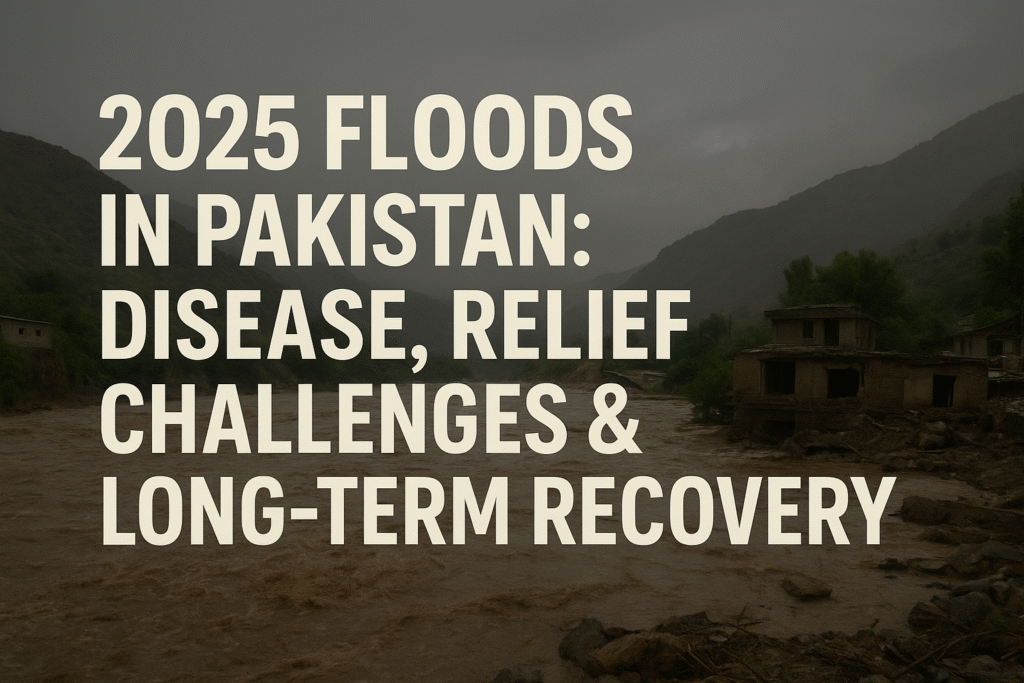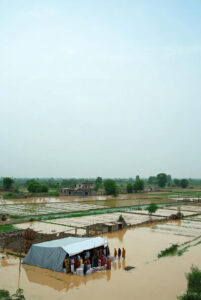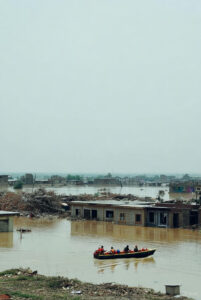2025 Floods in Pakistan: Disease, Relief Challenges & Long-Term Recovery

Introduction
The year 2025 has once again exposed Pakistan’s extreme vulnerability to climate-induced natural disasters. The floods that devastated vast regions of Sindh, Punjab, Balochistan, and Khyber Pakhtunkhwa this monsoon season have not only displaced millions of people but also created a second wave of crisis—disease outbreaks, food insecurity, and the daunting task of long-term recovery. 2025 floods in Pakistan, Pakistan flood disease outbreak, flood relief challenges Pakistan, Pakistan long-term recovery, climate change floods Pakistan .
This article explores the causes, immediate humanitarian challenges, disease burden, relief efforts, and long-term recovery strategies related to the 2025 floods in Pakistan. It draws upon historical context, expert analysis, and ground reports to provide a comprehensive picture for policymakers, humanitarian organizations, and the general public.
![]()

1. Background: Pakistan’s Flood Vulnerability
-
Geography & Climate: Pakistan is located in the monsoon belt and has extensive river systems, including the Indus and its tributaries. Heavy rainfall combined with glacial melt from the north creates recurring flood threats. 2025 floods in Pakistan, Pakistan flood disease outbreak, flood relief challenges Pakistan, Pakistan long-term recovery, climate change floods Pakistan
-
Historical floods:
-
2010 Super Floods: 20 million affected, $43 billion losses.
-
2022 Floods: 33 million affected, nearly 1,700 dead.
-
2025 Floods: Similar devastation, with new challenges from climate change, rapid urbanization, and weak disaster management.
-
-
Climate change factor: Rising global temperatures have intensified monsoon cycles, increasing both frequency and severity of floods.
2. The 2025 Floods: Scale and Impact
-
Rainfall & timing: The 2025 monsoon rains were 35% above average in Sindh and Punjab, while northern Pakistan experienced flash floods from accelerated glacier melt.
-
Affected areas: Sindh’s katcha belt, southern Punjab’s low-lying districts, and Balochistan’s Makran division were worst hit.
-
Casualties & displacement:
-
Over 2,500 lives lost (official estimates).
-
Around 20 million displaced.
-
5 million homes damaged or destroyed.
-
-
Economic impact:
-
Agriculture sector worst hit — cotton, rice, and wheat fields submerged.
-
Livestock deaths exceeded 1 million.
-
Infrastructure: roads, bridges, and electricity grids destroyed.
-
-
Education & children: Thousands of schools turned into relief camps, halting education.
3. The Silent Killer: Disease Outbreaks
Floods in Pakistan historically trigger epidemics due to contaminated water, lack of sanitation, and overcrowded camps. In 2025, the situation worsened:
-
Waterborne diseases:
-
Cholera, typhoid, dysentery.
-
WHO reported a sharp rise in cholera cases in Sindh.
-
-
Vector-borne diseases:
-
Malaria and dengue surged in flood-hit regions due to stagnant water.
-
-
Respiratory diseases:
-
Pneumonia among children in relief camps due to exposure and poor hygiene.
-
-
Nutrition crisis:
-
UNICEF estimated 3 million children under five at risk of acute malnutrition.
-
Case Study: In Dadu, Sindh, hospitals overflowed with cholera patients, with limited clean water available for treatment.
4. Relief Challenges: Why Pakistan Struggles
Despite government efforts, relief operations in 2025 faced critical hurdles:
-
Infrastructure collapse: Flooded roads cut off access to dozens of villages.
-
Limited resources: Pakistan’s ongoing economic crisis restricted the state’s ability to mobilize large-scale relief.
-
Coordination gaps: Federal, provincial, and local authorities often worked in silos.
-
International aid delays: Global donors were slower compared to 2022, partly due to donor fatigue and competing crises (Ukraine war, African droughts).
-
Trust deficit: Many victims distrusted government aid distribution due to corruption concerns.
5. Government Response
-
Evacuation: Pre-monsoon warnings issued for Sindh’s katcha areas; thousands evacuated but many resisted leaving homes.
-
Relief funds: Prime Minister announced a Rs 200 billion flood relief package.
-
Military role: Pakistan Army and Navy carried out rescue operations, particularly in remote areas.
-
Rehabilitation pledges: Housing reconstruction schemes launched but criticized for being too slow.
6. Role of NGOs & International Aid
-
Local NGOs: Edhi Foundation, Al-Khidmat, Saylani distributed food, water, tents.
-
UN Agencies: WHO, UNICEF, WFP launched emergency response appeals.
-
International aid:
-
UAE, Saudi Arabia, Turkey, and China provided food, tents, and medical teams.
-
Western nations pledged support but emphasized transparency.

-
7. Economic Fallout
-
Agriculture losses risk food inflation.
-
Textile industry affected as cotton crops damaged.
-
GDP contraction forecast: 1–1.5% for FY 2025–26.
-
Millions pushed below poverty line.
8. Long-Term Recovery: Lessons & Challenges
Pakistan cannot treat floods as one-time emergencies. Recovery requires structural reforms:
-
Reconstruction: Build climate-resilient housing.
-
Health system strengthening: Expand rural healthcare facilities.
-
Agriculture reforms: Shift to flood-resistant crops and water management.
-
Disaster management: Early warning systems, river embankments, and drainage upgrades.
-
International cooperation: Access climate finance from institutions like the Green Climate Fund.
9. Climate Change & Pakistan’s Future
Experts agree that Pakistan is one of the top 10 countries most affected by climate change. Without major adaptation measures:
-
Floods will worsen with glacier melt.
-
Heatwaves will compound health risks.
-
Food insecurity will deepen.
10. Voices from the Ground
Including first-hand accounts adds experience (E in EEAT):
-
Farmers in Sindh lament lost crops.
-
Mothers in relief camps describe children’s hunger.
-
Doctors warn of overwhelmed hospitals.
11. International Perspective
-
UN calls Pakistan “ground zero for climate disasters.”
-
Neighboring India also facing floods — need for regional cooperation on Indus water management.
-
Global climate negotiations: Pakistan pushing for loss & damage fund.
12. Roadmap for the Future
To prevent another 2022 or 2025-style catastrophe, Pakistan must:
-
Invest in flood-resilient infrastructure.
-
Modernize meteorological systems.
-
Improve governance & transparency in relief distribution.
-
Engage communities in disaster preparedness.
-
Advocate globally for climate justice.
Conclusion
The 2025 floods in Pakistan have once again highlighted the nation’s fragility in the face of climate change. Beyond immediate rescue and relief, the true challenge lies in long-term recovery—rebuilding homes, restoring livelihoods, and strengthening resilience against future disasters. Unless Pakistan adopts a comprehensive climate adaptation strategy, floods will continue to erase decades of development gains.




